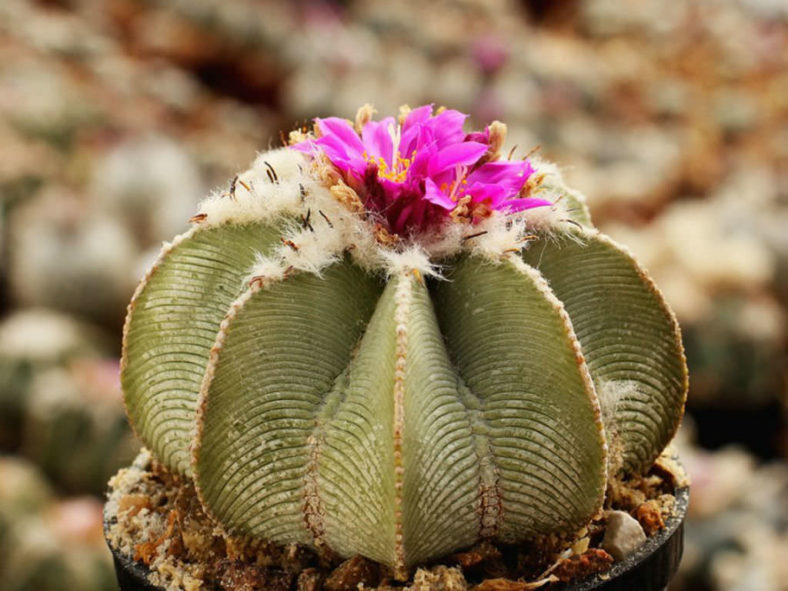Aztekium is a genus of three species of small globular cacti native to a small region in the state of Nuevo León in Mexico. Discovered in 1929 by F. Ritter, this genus was thought to be monotypic (with Aztekium ritteri) until a second species (Aztekium hintonii) was discovered by George S. Hinton in 1991. A further species, Aztekium valdezii, was found in 2011 by M.A. Alvarado Vázquez in the Sierra Madre Oriental mountains.
The genus name is dedicated to the Aztec people due to the resemblance between the plant's shape and certain Aztec sculptures.
Aztekiums only grow in cracks in steep, cliff faces filled with gypsum or limestone gravel and silt. The plants can look quite gnarly in the wild, but carefully cultivated specimens are beautiful. These cacti offset slowly but generously in cultivation.
Growing Conditions and General Care
Aztekiums are by far the most challenging cacti to grow. They have extremely slow growth, probably the slowest of the entire Cactus family. Aztekiums usually take several years for growth to be even noticeable. However, once a specimen is established on its own roots, it is no trouble to keep it, and it becomes easy to manage.

Due to the difficulty of cultivation, Aztekiums are most often grafted onto hardier stock. They require good drainage and regular watering in the summer. Keep the soil nearly dry in winter. If grafted, the plants can take a little more water. Just remember the graft stock is also a cactus and will rot if overwatered. Provide shade from midday through the afternoon. A little morning sun is OK.
Propagation
Aztekiums are usually propagated by seeds. The seeds are extremely fine and germinate readily, but the germination rate is very low (less than 5%).
Links
- Back to genus Aztekium
- Succupedia: Browse succulents by Scientific Name, Common Name, Genus, Family, USDA Hardiness Zone, Origin, or cacti by Genus